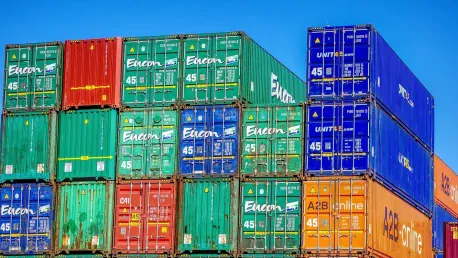Generative AI is transforming multiple industries by enabling the creation of new content, including text, images, music, and code. Nonetheless, deploying generative AI applications is often a complex endeavor due to the need for scalable, reliable, and efficient infrastructure. Here is where containers, Kubernetes, and Docker come into play. These open-source technologies furnish a robust framework for deploying and managing generative AI applications, ensuring they operate smoothly and efficiently. By leveraging containers, developers can easily address many of the challenges associated with deploying generative AI applications and streamline the entire process.
1. Containerize the Application
One of the first steps in enhancing the deployment of generative AI applications through containers involves utilizing Docker to build a container image of the application. This process starts with the creation of a Dockerfile, a specialized script that outlines the application’s dependencies, libraries, and setup requirements. By defining these parameters, the Dockerfile ensures that the application can be consistently deployed across various environments, be it development, testing, or production. This uniformity translates to fewer deployment errors and bumps in the road, which are often caused by environmental discrepancies.
Moreover, containerizing the application helps in isolating it from the host system, thus preventing potential conflicts between different applications running on the same machine. This isolation is critical, especially for generative AI applications that may rely on diverse and potentially conflicting software libraries. When the application is packed into a Docker container, it becomes portable and can be effortlessly transferred and run on any system that supports Docker. This portability is particularly valuable in collaborative settings where multiple teams might be involved in different stages of the application’s life cycle.
2. Upload the Image to a Registry
Once the Docker image is successfully built, the next step involves uploading it to a container registry. This step ensures that the image is easily accessible and can be deployed by Kubernetes. Container registries like Docker Hub and private registries serve as centralized repositories where Docker images are stored, managed, and shared. By transferring the Docker image to a registry, you enable various environments to pull the image as needed, facilitating seamless deployments across different stages of the project.
Being able to access the Docker image from a registry also enhances the security and integrity of the application. Container registries often provide built-in features for encryption, access control, and image vulnerability scanning. These features help safeguard the Docker images from unauthorized access and potential security threats. Additionally, with the Docker image stored in a registry, it becomes easier to manage versions and ensure that the correct version of the application is being deployed at any given time.
3. Draft Kubernetes Manifests
After uploading the image to a registry, the next crucial step is drafting Kubernetes manifests. These YAML files describe the desired state of your generative AI application, including details such as deployments, services, and configurations. Kubernetes manifests are essential as they serve as the blueprint for how the application should be deployed and managed within a Kubernetes cluster. The YAML files specify which container images to use, how many replicas of the application should run, and how the application should be exposed to the network.
By clearly defining these parameters, Kubernetes can orchestrate the deployment of the generative AI application, ensuring it runs as intended. Writing precise and well-structured manifests is critical because they dictate the behavior of the application within the cluster. Mistakes or omissions in these files can lead to deployment issues, service disruptions, or even security vulnerabilities. Once the manifests are in place, Kubernetes takes charge of maintaining the desired state, continuously monitoring the application, and making adjustments as necessary.
4. Deploy to Kubernetes
The deployment phase involves using kubectl commands to launch the generative AI application on a Kubernetes cluster. kubectl is a command-line tool that interacts with the Kubernetes API server and enables you to deploy, inspect, and manage applications running within the cluster. By executing the appropriate kubectl commands based on the drafted manifests, you instruct Kubernetes to allocate resources, instantiate containers, and configure network settings as defined in the YAML files.
Kubernetes excels at handling the orchestration, ensuring high availability and fault tolerance for the deployed application. For a generative AI application, this means that Kubernetes will manage the application’s lifecycle, handle load balancing across multiple instances, and even ensure self-healing by automatically restarting failed containers or rescheduling them to other nodes in the cluster. The automated orchestration capabilities of Kubernetes alleviate much of the operational complexity, allowing developers to focus more on enhancing the application itself rather than worrying about its deployment environment.
5. Monitor and Scale
Generative AI applications require continuous monitoring to ensure they perform efficiently and effectively. Once deployed, it is crucial to establish a robust monitoring system to track the application’s performance, resource usage, and health. Tools like Prometheus and Grafana can be used with Kubernetes to provide real-time metrics and dashboards. Monitoring helps in identifying bottlenecks, diagnosing issues, and making informed decisions for scaling the application.
Scaling generative AI applications involves adjusting the number of running instances based on demand. Kubernetes offers powerful autoscaling features, such as the Horizontal Pod Autoscaler (HPA), which automatically scales the number of pods in a deployment based on observed CPU or memory usage. This ensures that the application can handle varying loads, maintaining performance during peak times and optimizing resource usage during low-demand periods.
By effectively monitoring and scaling generative AI applications, developers can ensure high availability, optimize resource allocation, and maintain the desired quality of service for users. This holistic approach to deployment, leveraging containers, Kubernetes, and Docker, significantly enhances the efficiency and reliability of generative AI applications.









